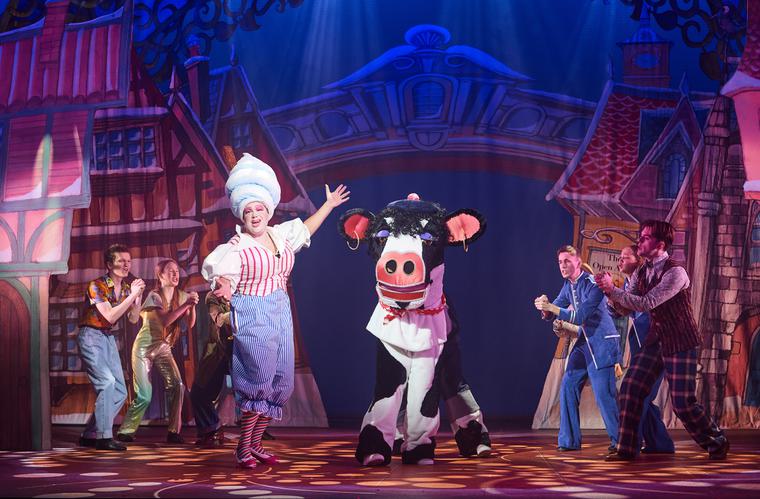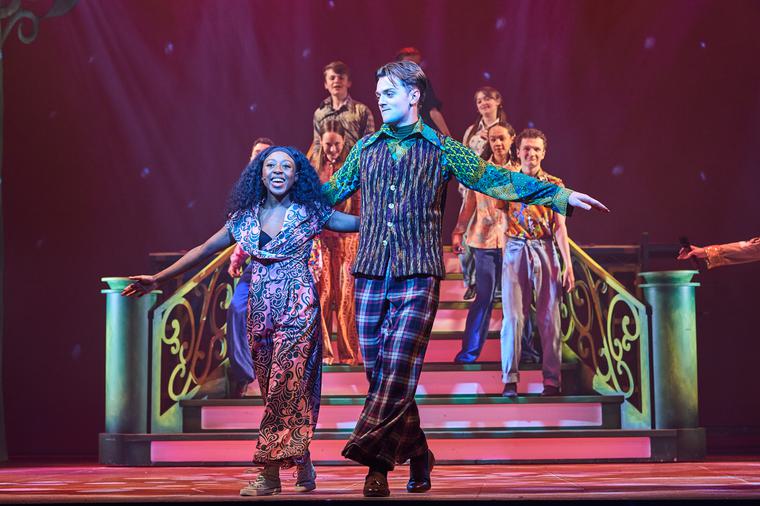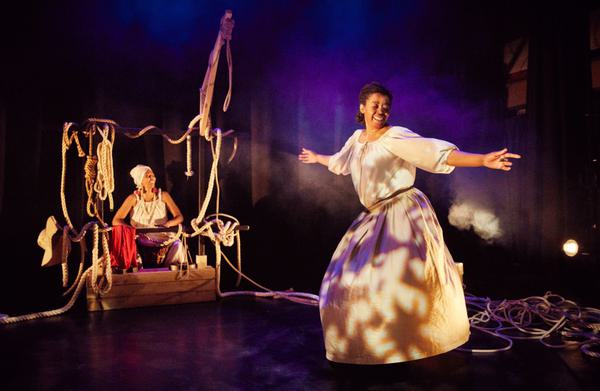News Story
There’s a real buzz at Oxford Playhouse at the moment. There’s always an energy within our building on Beaumont Street, but at this time of year it reaches fever pitch. There are Christmas trees with twinkly lights on The Playhouse 1930s canopy, Korky Paul illustrations festoon the doors and foyer walls, booster seats are piled high ready for young audiences, our incredible team of volunteer ushers have donned their festive jumpers and reindeer antlers, the ice cream freezers are stocked to bursting and there’s an inviting aroma of mulled wine from the theatre bars. All of this could of course only mean one thing – panto is here!
Since the pandemic, during which we sadly had to forgo a pantomime production, Oxford Playhouse panto audience numbers have gone from strength to strength. And happily, pantomime sales right across the country are booming, despite the cost-of-living crisis. Pantomime can often be the lifeblood of a theatre, so the positivity around it can only be a good thing for venues still recovering post-Covid. For The Playhouse it’s certainly our biggest home-produced show of the year, with around 36,000 people watching across a six-week run, including 10,000 very excited schoolchildren.

So what is it about panto that makes its popularity so enduring? Pantomime certainly has a rich history within our culture, with some of its roots dating back to the Mummers Plays of the Middle Ages, as well as being drawn from the Italian commedia dell’arte. Whilst performed at Christmas and New Year, most modern pantomimes don’t make a great deal of reference to the festive period but are based around traditional fairy tales such as Cinderella, Dick Whittington and Snow White – stories that we know and love.
When it comes to panto, there’s a comfort in knowing to some degree what you’re going to get. You’re pretty much guaranteed a dame, with multiple outlandish outfits and plenty of double entendre. They’ll be the scene with the goules when we make our voices hoarse from shouting ‘it’s behind you’ over and over again. They’ll be an out-of-control baking routine when the stage gets unbelievably messy. We’ll know all the music, even if the lyrics sound a bit different. Our good fairy enters stage right. Our villain creeps on from stage left. And no self-respecting pantomime would be complete without a magical transformation scene just before the interval. It’s wonderfully familiar!
Pre-pandemic we may well have taken these things for granted. But with memories of holidays spent apart fresh in our minds, delighting in these traditions, and enjoying shared experiences across generations of family and friends, feels incredibly precious.
At the first day of rehearsals for this year’s pantomime Jack and The Beanstalk, our fantastic director Toby Hulse (who also directed last year’s glittering Cinderella) spoke to the company about what the production might be like. He concluded that it should be like going to a really good wedding, where “You know exactly what is going to happen, but you are delighted and surprised by how it is done.”

At Oxford Playhouse we know the importance of panto tradition, but we’re also not afraid to have fun with making room for the new and ensuring some healthy panto evolution. What could be better than a recipe of a home-produced, traditional pantomime well told with a few surprises and quirks along the way? Put into the mix an incredible creative team who lovingly realise the production, a hugely talented ensemble cast, and a wonderful community young company, and you can see why audiences are flooding back every year and booking even earlier.
One of the other reasons why The Playhouse is buzzing with the arrival of panto is that ultimately, making a good panto is a lot of fun for everybody involved, and understandably generates a huge amount of pride within the Oxford Playhouse team. Whether team members are involved in building the set, creating a lighting design for the show, sewing a giant’s jacket, making a fairy wand, selling tickets or welcoming audiences to their seats, there is much job satisfaction and fun to be had. What other kind of production would generate Rehearsal Notes that include: “A squeaky wheel off noise is needed for the weather machine in Cloud Land in Act 2” or “The costume designer has had a discussion with the director about the cow sight lines”; and finally (and perhaps reassuringly) “The dynamite has been cut in Scene 6 - no need for a pocket in the Dame’s dress now.”

To keep everyone’s energy levels up during the run there are the notes from the performances themselves. Some favourites from last year include “Elf found in auditorium after the show; handed to Box Office and will hopefully be collected.”; “One gentleman commented he felt slightly nervous about bringing his grandchildren for the first time, but he thinks he had a better time than they had”; “A Reception class had to wait in foyer for approx. 20 mins for their coach to pick them up – so FOH staff joined them in some carol singing.” And then from Boxing Day “A family arrived and realised they had booked tickets for 26 November – thankfully the Duty Manager managed to find them House Seats so they could watch the show today.”
As we enjoy six weeks of silliness, laughter, and shared experience at The Playhouse, we’re confident of spreading the word that panto is good for everyone. As well as having an uplifting and fun-filled time, the custard on the pie (which will almost certainly be flying across the stage!) is that audiences are supporting their local theatre too. See you at the top of the beanstalk!









